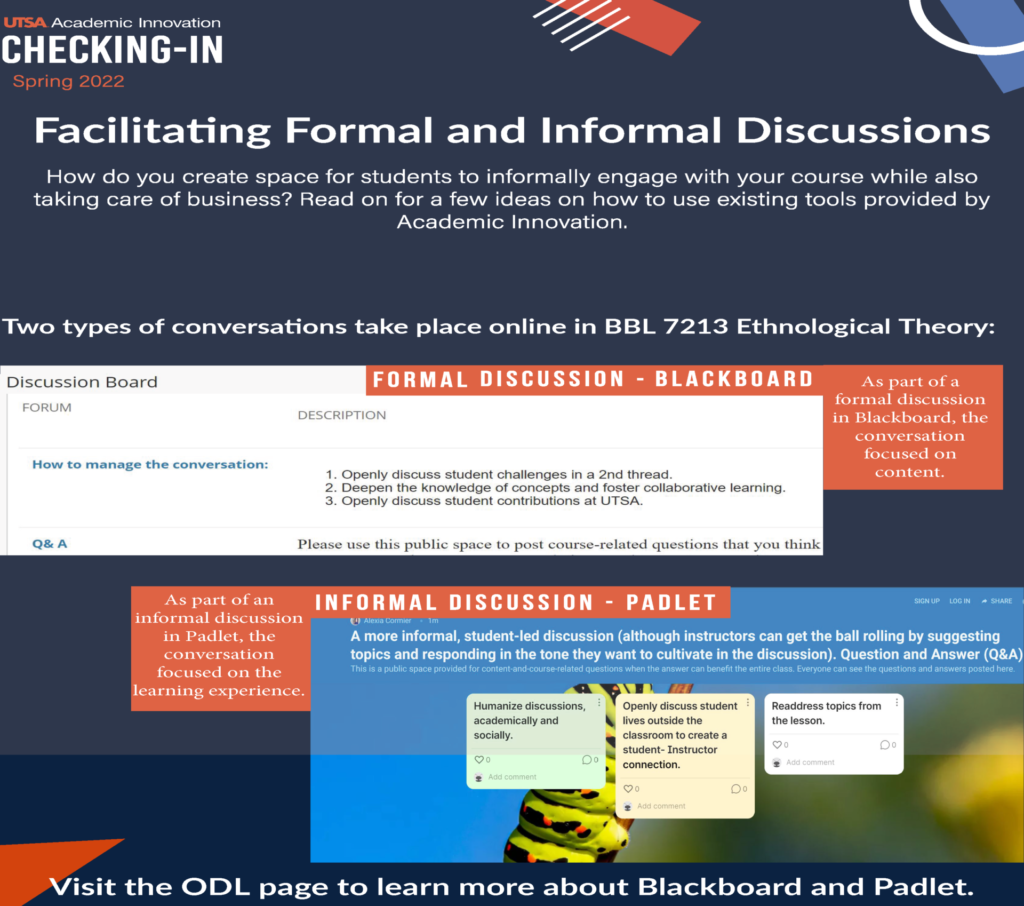How digital discussions spark connection and collaboration
in Blog Post
By Brett W. Copeland,
Academic Strategic Communications
There are two types of conversations happening online about M. Sidury Christiansen’s class BBL 7213 Ethnological Theory. The ‘official’ or formal conversation is in Blackboard. It’s a typical discussion module where students must participate to complete assignments – a fairly standard tool used by faculty across the university.
But there’s also another chat thread being used by students – one where they openly discuss their challenges, their impressions of the subject matter, and topics that may be tangential and a little beyond the scope of the class. Sometimes, they’ll even openly discuss their lives outside the classroom and how it contributes to their experiences at UTSA.
But that second chat isn’t a secret – Sidury set it up intentionally.
“I created an informal discussion group using Padlet in order to get a better sense of who my students are and what they’re struggling with or really finding valuable about my class,” says Sidury. “From there, I’m able to address topics that maybe didn’t hit during a lesson or get an understanding of what I need to spend more time on.”

She also said it’s another way for students to connect with her, her course and form bonds with each other.
“I get to be human on the Padlet discussion,” she says. “It’s a chance for my students to think about the course in two different frames – academically and socially.”
Sidury understands that the opportunities for students to engage informally have changed since the pandemic. In some ways, it limited the traditional in-person interactions that are not easily replicated in a formal online setting – random chats before or after class, spontaneous meetups or study groups.
“Padlet has allowed me the opportunity to engage in classroom discourse and reflect on class readings, lectures, and class discussions. I can learn from my peer’s reflection and questions regarding course articles.” – Mary B., student
The lack of one-off or random conversations has taken away some of the pathways that students use to digest the material and master the subject matter. However, Sidury says there may be a few random conversations about dogs, food, or what’s going on in the world, but that she doesn’t think it’s that off-topic.
“Like in the rest of our lives, we don’t experience things in silos,” says Sidury. “While these interactions may be happening someplace else, I’m glad it’s so easy to provide a space for my students to contextualize what they’re learning and relate to each other – and me.”

View this infographic to see an example of the two separate chat threads.
Click image to view/download.
For More Review:
Tags: class discussion, Padlet, student engagement

